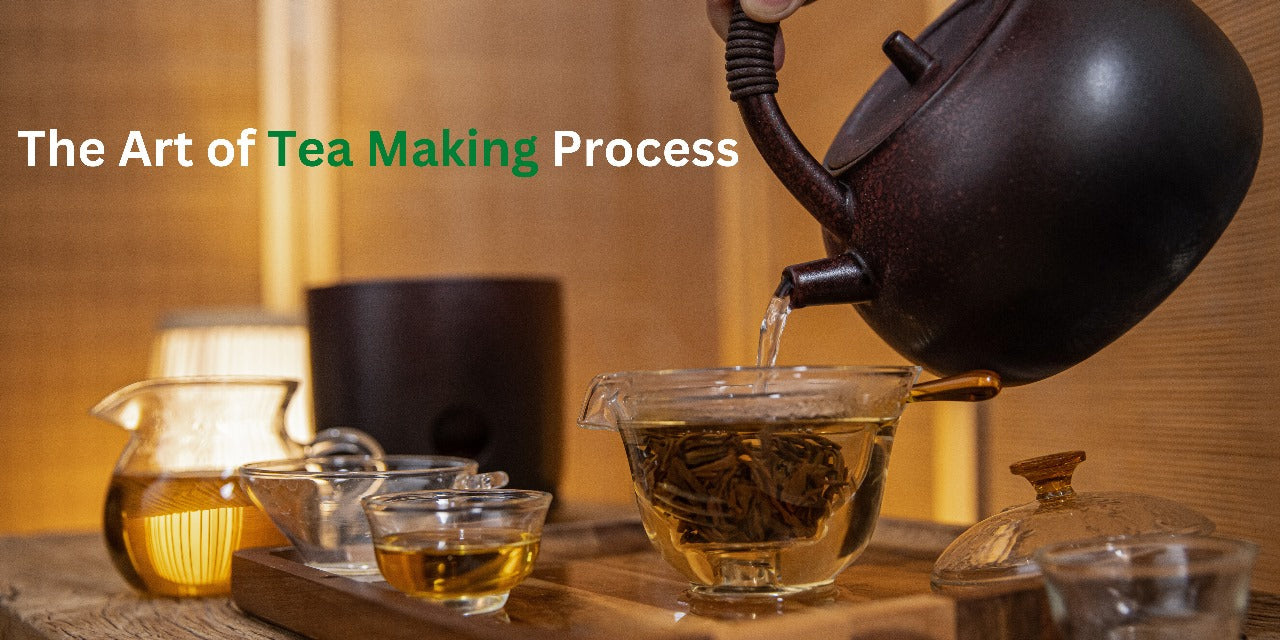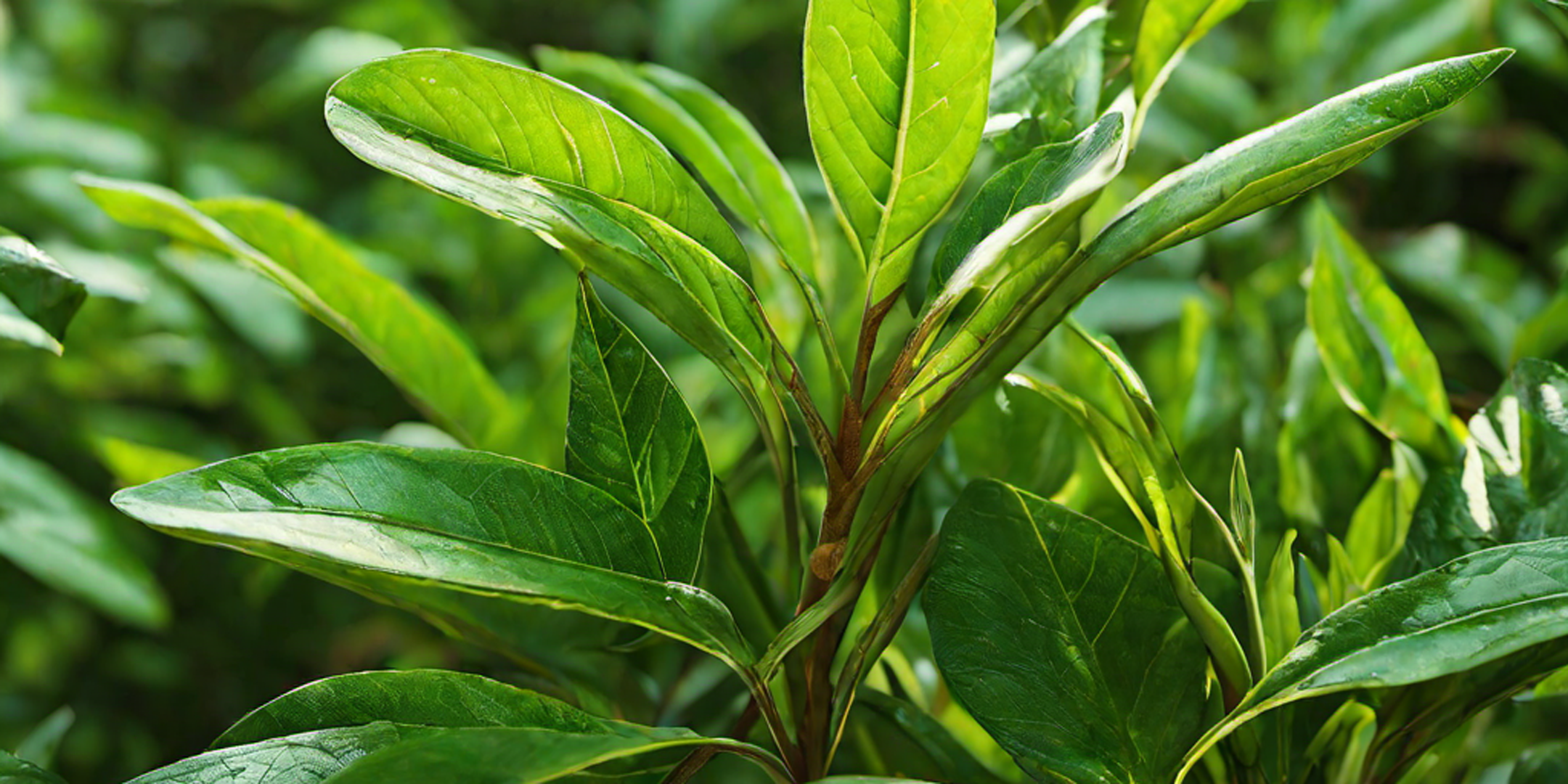Tea enthusiasts are always eager to explore the nuances and flavors of different types of tea. When it comes to Darjeeling tea, the terms "first flush" and "second flush" often pique curiosity. In this comprehensive guide, we will delve into the world of first and second flush teas, exploring their origins, differences, and the debate surrounding which one is better. So grab a cup of your favorite tea, sit back, and let's embark on a journey through the fascinating realm of Darjeeling tea.
Understanding First and Second Flush Tea
When we talk about first and second flush teas, we are mainly referring to teas from the renowned Darjeeling region. While these terms are occasionally used to describe teas from other origins, it is the lighter black teas from Darjeeling that have made first and second flush teas so iconic. Although they share some similarities, there are distinct differences that make each flush unique and intriguing.
The Similarities
First and second flush teas share certain commonalities. Both types of tea come from the Darjeeling region, which means they are grown in the same soil, experience the same rainfall patterns, and are exposed to the same amount of sunlight. Additionally, if you compare first and second flush teas from the same tea estate, you will find that they are made from the same tea plants, but harvested at different times of the year. Both first and second flush teas undergo oxidation and are categorized as black teas, although the short oxidizing window of first flush teas often gives them the characteristics of a lightly roasted oolong.
The Differences
The main distinction between first and second flush teas lies in their harvest windows. The first flush, as the name suggests, is the initial harvest of the year, typically taking place from late February to late April. On the other hand, the second flush occurs from early May to the middle of June. Between these two harvests, the tea plants undergo a resting period known as "bhanji," during which they cease to produce new growth. While the duration of the bhanji period can vary, it usually lasts around 2-3 weeks. The processing methods also differ for first and second flush teas, particularly in terms of the duration of leaf oxidation. First flush teas undergo a rapid oxidation process, sometimes lasting less than 15 minutes, while second flush teas are oxidized for a standard 2-3 hours. In terms of flavor, first flush teas are explosively aromatic but yield a light cup in terms of both flavor and color. Second flush teas, on the other hand, have a deeper body, a dark amber hue, and a less fragrant profile. They are known for their full-bodied nature and the signature "muscat grape" notes that are characteristic of Darjeeling tea.
The Debate: First Flush vs. Second Flush
The question of which flush is better, first or second, has sparked a long-standing debate among tea connoisseurs. The response to this question is subjective and primarily depends on personal preferences. Traditionally, second flush teas held the spotlight and played a significant role in putting Darjeeling tea on the map. The Germans, in particular, developed a strong affinity for second flush teas during the 1970s, leading to increased demand. However, over the past two decades, there has been a shift towards first flush teas. Some experienced tea drinkers still believe that first flush teas lack the complexity and depth that make a truly exceptional tea. Nevertheless, first flush teas are prized for their delicate flavors, higher caffeine content, and the ethereal experience they offer. These teas capture the essence of the first delicate buds of spring, resulting in a lighter, more aromatic cup that can be truly enchanting.
Personal Preference
Ultimately, the choice between first and second flush teas comes down to personal preference. Some tea enthusiasts appreciate the intricate flavors and fragrances of first flush teas, while others prefer the robust body and deeper hues of second flush teas. To truly understand the differences and similarities between these flushes, it is essential to experience them firsthand. Trying both Darjeeling first flush and second flush teas will allow you to appreciate the unique qualities of each and develop your own preference.
The Evolution of Darjeeling TeaTo gain a deeper understanding of first and second flush teas, it is worth exploring the evolution of Darjeeling tea as a whole. Darjeeling, located in the Indian state of West Bengal, has carved a niche for itself in the world of tea production. The region's unique terroir, with its high-altitude tea gardens, misty climate, and mountainous terrain, provides the perfect conditions for cultivating exceptional tea. Darjeeling tea has gained global recognition for its distinct flavors and delicate characteristics, earning it the nickname "the Champagne of teas." The tea industry in Darjeeling has a rich history that dates back to the mid-19th century when the British established the first tea gardens in the region. Since then, Darjeeling tea has become synonymous with quality and exclusivity, captivating tea lovers around the world.
The Art of Tea Harvesting
To truly appreciate the nuances of first and second flush teas, it is essential to understand the art of tea harvesting. Tea leaves are plucked from the tea plants during specific periods known as flushes. In addition to first and second flush teas, there is also an autumn flush, which occurs in October and November. Each flush has its own unique characteristics, influenced by the seasonal variations in weather and temperature. The first flush, harvested in late winter or early spring, benefits from cooler temperatures and is eagerly anticipated by tea enthusiasts. Second flush teas, on the other hand, thrive in the warmth and sunlight of spring and summer, resulting in vibrant flavors. Autumn flush teas offer their own distinct qualities, providing a delightful variety for tea lovers to explore.
The Distinctive Characteristics of First Flush Tea
First flush teas are highly prized for their exceptional qualities and limited availability. Let's explore the distinctive characteristics that set first flush teas apart.
The Harvest PeriodThe first flush harvest takes place in late winter or early spring, marking the awakening of the tea plants from their winter dormancy. This period is crucial for tea enthusiasts who eagerly await the arrival of the first flush teas. The anticipation and demand for these teas contribute to their higher price point compared to other flushes.
Nutritional Value
The first harvest of the season results in tea leaves with the highest nutritional value. Packed with essential nutrients, first flush teas are known for their revitalizing properties. The young, tender leaves of the first flush harvest offer a concentrated dose of antioxidants, caffeine, and flavor.
Flavor Profile
When it comes to flavor, first flush teas are a treat for the taste buds. They boast a wide range of versatile tastes, creating a sensory experience that is both delightful and complex. The flavors of first flush teas can vary from floral and fruity notes to earthy undertones. Tea connoisseurs often describe first flush teas as having a unique aroma and a slightly sweetish taste.
Color and Appearance
The appearance of first flush teas is as captivating as their flavor. Harvested at the onset of spring, these teas tend to have a lighter color with a mild fruitiness. The infusion of first flush teas often exhibits a pale golden hue, reflecting the delicate nature of the leaves.
The Distinctive Characteristics of Second Flush Tea
Second flush teas possess their own distinct qualities that make them highly sought after by tea aficionados. Let's explore the features that set second flush teas apart from their first flush counterparts.
The Harvest Period
The second flush harvest occurs in June or July, following the first flush. As the tea plants continue to grow under the warmth and sunlight of spring and summer, the second flush teas develop their unique flavors and characteristics. While they may not generate the same level of anticipation as first flush teas, second flush teas have their own dedicated fan base.
Nutritional Value
While second flush teas offer their own set of benefits, they do not possess the same nutritional value as first flush teas. After the first harvest, the tea plants experience resource depletion, resulting in a lower concentration of nutrients in the second flush leaves. However, second flush teas still provide a range of health benefits and are enjoyed for their distinctive flavors.
Flavor Profile
The flavor profile of second flush teas is characterized by a full-bodied, robust taste. These teas exhibit a deeper flavor compared to first flush teas, with a rich and satisfying complexity. The signature notes of Darjeeling tea, often described as "muscat grape," are more pronounced in second flush teas, contributing to their unique and memorable taste.
Color and Appearance
In contrast to the lighter color of first flush teas, second flush teas showcase bold and vibrant hues. The infusion of a second flush tea often displays amber tones that are absent in first flush teas. This visual distinction adds to the allure and visual appeal of second flush teas.
Making the Choice: First Flush or Second Flush?
When it comes to choosing between first flush and second flush teas, there is no right or wrong answer. It ultimately boils down to personal preferences and individual taste. Some tea enthusiasts prefer the delicate and aromatic nature of first flush teas, while others gravitate towards the robust and full-bodied flavors of second flush teas. To truly appreciate the nuances and complexities of Darjeeling tea, it is recommended to sample both flushes and discover your own preference. Exploring the world of first and second flush teas allows you to embark on a sensory journey, uncovering the unique flavors and characteristics that make Darjeeling tea so captivating.
How to Brew First and Second Flush Teas
To fully enjoy the flavors and aromas of first and second flush teas, it is essential to brew them correctly. Here are some tips to help you brew the perfect cup of Darjeeling tea:
- Water Temperature: For first flush teas, the recommended water temperature is around 180°F (82°C). This slightly lower temperature preserves the delicate flavors and prevents any bitterness. For second flush teas, a water temperature of 195°F (90°C) is suitable to extract the full-bodied flavors.
- Steeping Time: First flush teas require a shorter steeping time of around 2-3 minutes. This allows the delicate flavors to infuse without becoming overpowering. Second flush teas benefit from a slightly longer steeping time of 3-4 minutes to fully develop their robust flavors.
- Tea to Water Ratio: To achieve the desired strength, use approximately 1 teaspoon of loose leaf tea per cup of water. Change the amount to your preference and how strong you want the flavor.
- Tea Ware: Use a teapot or a tea infuser to brew your Darjeeling tea. This allows the leaves to unfurl and release their flavors fully.
- Enjoy the Experience: Brewing and savoring a cup of Darjeeling tea is a sensory experience. Take the time to appreciate the aroma, color, and flavors as you indulge in each sip.
Conclusion
In the world of tea, the distinction between first flush and second flush teas holds immense significance. The unique characteristics and flavors of each flush offer tea enthusiasts a diverse range of options to explore and enjoy. Whether you prefer the delicate aromas of first flush teas or the bold flavors of second flush teas, both flushes provide an opportunity to indulge in the captivating world of Darjeeling tea. So go ahead, brew a cup of your preferred flush, and savor the enchanting flavors that make Darjeeling tea truly exceptional.




